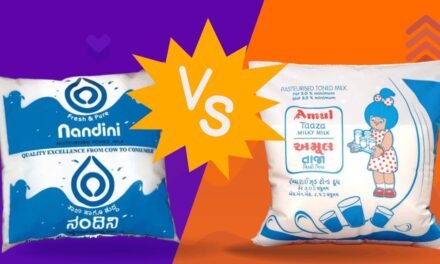After years of enjoying the protection, the Indian poultry industry should be ready for the changed scenario. Indian market is going to be flooded with frozen American Chicken legs. However, the Indian poultry industry should see this as an opportunity for both importing and exporting chicken parts and be a player in the global market for growth, survival, and also prosperity, suggests, Rajat Baisya
The Indian poultry industry has enjoyed protection for long years as the government did not allow the import of frozen chicken into India on various grounds to safeguard the interest of the Indian poultry industry. Under WTO regime where India is also a signatory, there has to be a fair trade practice to be followed offering market for global competition. The Indian poultry industry is primarily having a domestic market with no exportf. But under new WTO ruling that protection is now going to be over.
Hopefully, the Indian poultry market will get flooded now with frozen American Chicken legs. Our commerce minister said that Indians prefer fresh chicken and therefore, frozen chicken from USA will not have more than 5% of the total Indian market and hence there is no reason to worry about it. But if there is no reason to worry about why we tried to protect and insulate the Indian poultry industry for so long? Possibly, there is no reason to worry about but that will be for different reasons. Some local producers claim that India would be flooded with USD 300 million of chicken legs annually and other estimates are as low as USD 15 million.
What will be the exact market for the US chicken will be known in the coming months but it is true that a significant size of the market will be penetrated by US chicken soon. The large consumer of chicken are some of those MNCs like McDonald, Burger King, and KFC and they are expected to shift their sourcing immediately to US suppliers throwing some of the local vendors to these fast foods restaurant chains out of gear.
If there is a shift in consumer preference to frozen chicken legs because it will be cheaper and which Indian consumers prefer to have, small time traders in local market and meat shops might be impacted but it is unlikely as selling frozen chicken legs will require cold cabinets and that will not be available in the village and urban markets soon. In immediate future they are unlikely to feel the impact of the import from the US.
In India, we sell whole chicken or part thereof at the same price although consumers prefer chicken legs not for any valid reasons. But in America no one likes chicken legs and consumers prefer chicken breast. The price of chicken breast is four times higher than that of the legs. Chicken legs in the USA are thus very cheap and practically sold as bye products and available at a very low price which will now flow to the Indian market making the price of chicken fall sharply and this should be a welcome development for the Indian consumers.
Products are differentiated to satisfy unique customer preferences and likings and that is how in the USA chicken breasts are selling at four times higher rate than legs. In Europe and the USA, you get chicken portions in various sizes and prices. American consumers are very discerning and for them, each portion of the chicken is sold at a variable price based on demand and size. Unlike the Indian poultry market, all types of meats including beef, pork, goat, lamb, and chicken are sold packed and frozen in various portions and sizes at different prices.
Whereas in India price of meat is the same for any portion that consumers like to take and mostly it is sold fresh, unprocessed, and slaughtered in the presence and in front of the customers. Indian poultry industry could have easily developed a market for chicken legs to be sold at higher prices than chicken breasts making the industry more profitable and sustainable but they did not do it. Product differentiation based on customer preferences is a well-established marketing strategy. But in India meat marketers of both dressed, fresh and frozen chicken have failed in this task. They even did not try, although meat products like kababs, sausages, keema, and salamis are sold as value-added processed products in the Indian poultry market.
Now that inevitable is going to happen and cheap American frozen chicken legs will flood the Indian market, our local producers and marketers should see that as an opportunity and not a threat as it might be appearing to be so. Indian poultry industry should now take this changed scenario to become an importer of chicken legs from the USA and exporter of chicken breasts to the USA where price recovery will be much higher for them. The changing business environment can then become a newfound opportunity to be more profitable for the Indian poultry industry.
However, to achieve that objective we need to produce big chicken and also to have a modern hatchery with all facilities and modern high protein feed together with economy of scale to improve productivity and cost of production. This transitory phase should be the time to make this important shift in developing modern hatchery and feed production facilities to capture the market opportunity.
There are lobbyists talking about the fact that American chickens are being fed with feed made from genetically modified grains and soybean but this should not be the problem as in India we use GM cotton seed which produces higher cotton yield but we also use cottonseed oil which goes for production of Vanaspati and oil cakes which go for the production of animal and poultry feed. But not only chicken, cattle, fish and shrimp also fed with cottonseed.
For years Indian producers pursued the government to argue in the WTO that the USA suffered attacks of avian flu and other diseases, so the American chicken should be kept out as potential health hazards. But, in fact, the USA has no major attacks of avian diseases after 2004 and such attacks were more common in India than in the US. We, therefore, have been stopping the import so far on grounds that we ourselves are so prone to.
To become a significant player in this new change the Indian poultry industry will have to produce large chicken in place of small local (desi chicken) so that they can compete with American producers in the US on the price to export chicken breasts to the US market. This transition with relevant technology and modern processing facilities will call for new investments and collaboration. And whoever does this is also likely to benefit from the opportunity to export even chicken feet to China.
The Chinese love to eat large chicken feet. They eat chicken feet as dim sum styled braised chicken feet. Chicken feet is also eaten in Vietnam, Korea, and the Philippines and we can find the market in those countries as well. Once India produces large chickens, its chicken feet will be exportable and will not be a waste product. Nothing of chicken then will be a waste.
After years of enjoying the protection, the Indian poultry industry should see this changed scenario as an opportunity for both importing and exporting chicken parts and be a player in the global market for growth, survival and also prosperity.
For achieving that objective India should look at the global market for its poultry products and not only the domestic market and to do that global standards of operation, quality, hygiene as well as food safety standards will have to be implemented to qualify to compete in the global market. In addition to investment in technology and economy of scale, this also calls for a major attitudinal change for the better tomorrow. Those who will act earlier are likely to reap the harvest from this opportunity.
The author is the chairman of Strategic Consulting Group and served as Professor and Head of the Department of Management Studies, IIT Delhi.
Photo by azerbaijan_stockers / Freepik
















